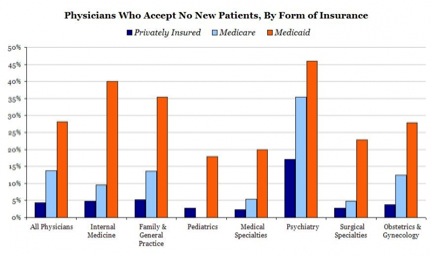The Obamacare Disinformation Campaign Begins.
Stanley Feld M.D.,FACP,MACE
According
to the April Kaiser Health Tracking Poll forty two (42) percent are unaware
that Obamacare is still the law of the land. Twelve (12) percent of the surveyed population
believes Obamacare has been repealed by Congress. Obamacare has been repealed
by the House of Representatives many times. It has not gotten through committee
or on to the floor of the Senate. Harry Reed has blocked consideration.
Seven (7) percent of the surveyed
population believes Obamacare had been overturned by the Supreme Court. It is
true that parts of Obamacare have been overturned by the Supreme Court. An additional twenty three (23) percent do not
know whether or not Obamacare remains law.
Half the public surveyed says it
does not have enough information about the healthcare reform law to understand
how it will impact their own family. The majority of this half are the
uninsured and low-income households.
Obamacare as a law is in financial trouble. The
generous amount of money put in the budget for Obamacare has been spent already. The tax
increases put in place to fund Obamacare have not been sufficient.
Congress has refused to pour good money after bad.
President Obama seems unconcerned about the money he
spends to fund Obamacare as the deficit continues to soar.
He continues to blame congress for Obamacare’s
problems.
He also blames the decrease in important services
such as White House visits and air traffic controller furloughs on the
sequestration. He ignores the fact that the sequestration was his idea. He has
blamed his opponents for the sequestration.
“President
Obama kicked off another campaign-style effort to get people to sign up for the
so-called Affordable Care Act.
“In a statement dripping with condescension Obama tried to
blame misinformation for his health care troubles.”
He said, “Precisely because there’re
been so much misinformation, sometimes people may not have a sense of what the
law actually does.
He continued, “We’re going
to need everybody out there to make sure they get the right information.”
“Don’t just read a blog or some
commentary from some pundit that has a political agenda. Make sure you
know what the actual facts.”
Don’t let people confuse you. Don’t
let them run the okeydokey on you. Don’t be bamboozled.”
The next step in President Obama’s playbook is to
frighten the people.
“The refusal by about half the states to expand Medicaid will leave millions
of poor people ineligible for government-subsidized health insurance under
President Obama’s health care law even
as many others with higher incomes receive federal subsidies to buy insurance.”
My impression was that states that refused to form
their own health insurance exchanges were going to have health insurance
exchanges ceated by the Obama administration. The federal government run exchanges were
supposed to provide the same coverage the states are supposed to provide under
directives controlled by the Obama administration.
The Obama administration
keeps moving terms around. It also usually gives the story to a favored media
outlet, in this case the New York Times.
The administration’s creditably
is fading fast.
The tactics used to hide the
real Bengashi story, the challenge to freedom of the press and IRS tactics and
the realization by unions that the bill is not in favor of their motives has
served to question President Obama’s creditability.
He claims to have not known anything
about each scandal. His unawareness of these scandals has been hard to believe
by most people.
The stories about each
scandal, told by the administration, are unbelievable. These stories become
more unbelievable as they are changed daily in an attempt to soften the blow.
This makes me think
President Obama’s campaign tactics to promote Obamacare is not going to fly
with the public.
People below the poverty
level should pay a small percentage of their income for healthcare coverage. They are already immune
from paying income tax if they make less than $38,000 a year.
Citizens at other levels of
income should pay a greater percentage of their income just as they do in
Indiana. Everyone should have some skin in the game so they are responsible and
feel independent of government decision making.
The administration is
blaming those non-participating states for Obamacare’s mistakes. It is worse
that they are penalizing the indigent.
This is not President
Obama’s unusual campaign tactic. I cannot believe the American people have let
him get away with these tactics for so long.
The opinions expressed in the blog “Repairing The Healthcare System” are, mine and mine alone
Please have a friend subscribe

Mitzi • October 14, 2013
Hello it’s me, I am also visiting this web page regularly, this web page is in fact fastidious and the people are in fact sharing nice thoughts.
toprespect.Com • October 23, 2013
I知 not that much of a internet reader to be honest but your blogs really nice, keep it up! I’ll go ahead and bookmark your site to come back later on. All the best